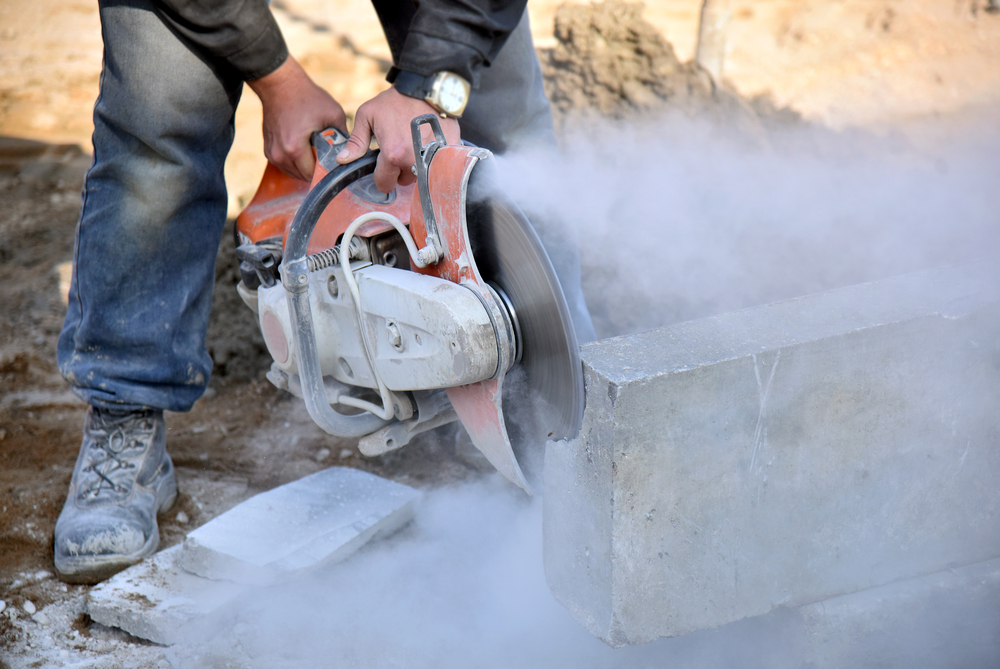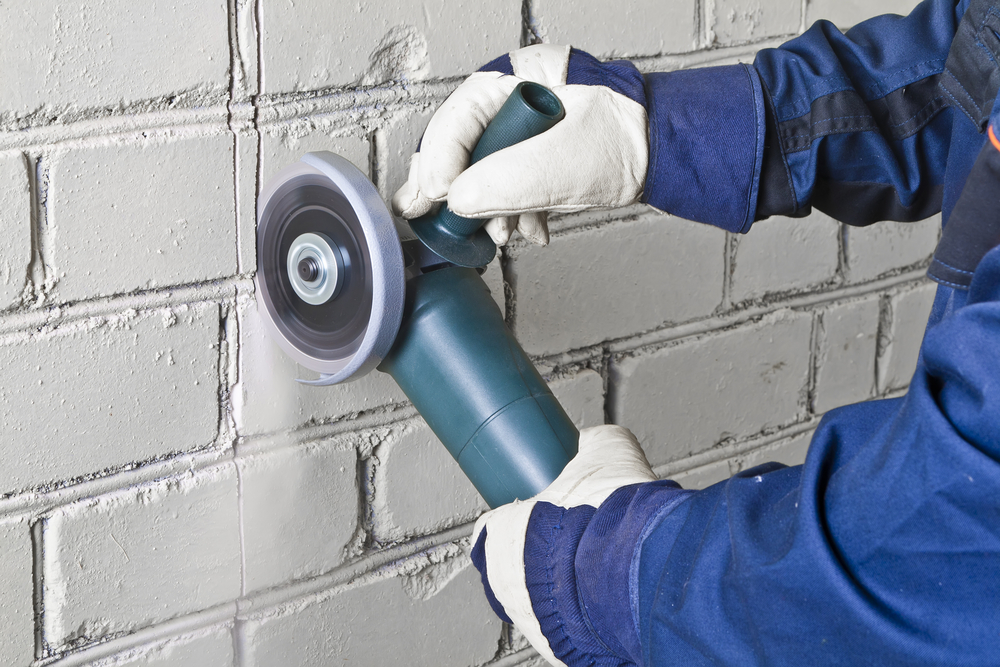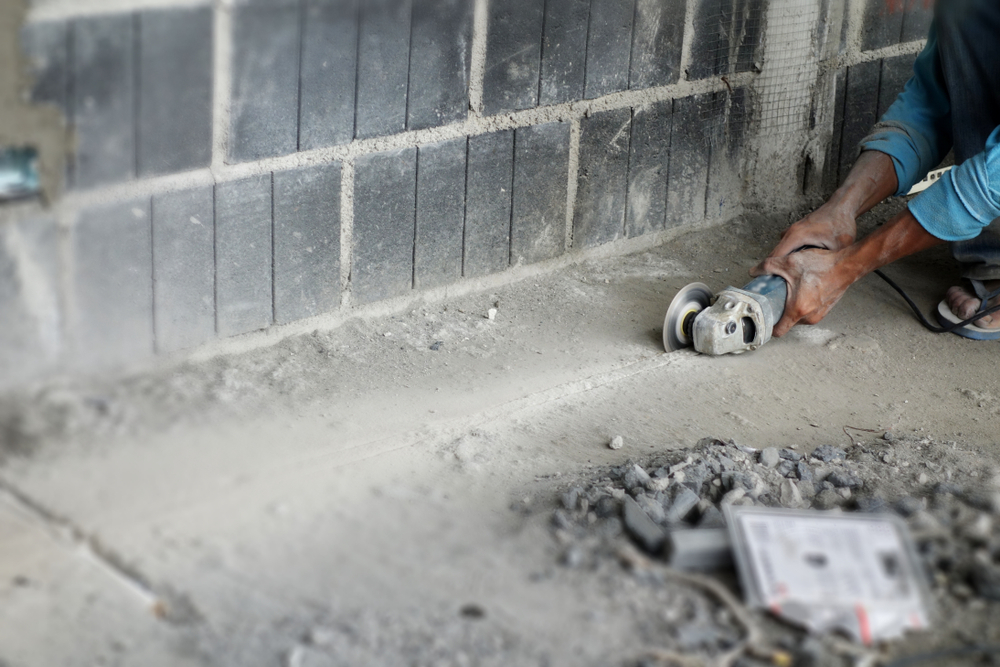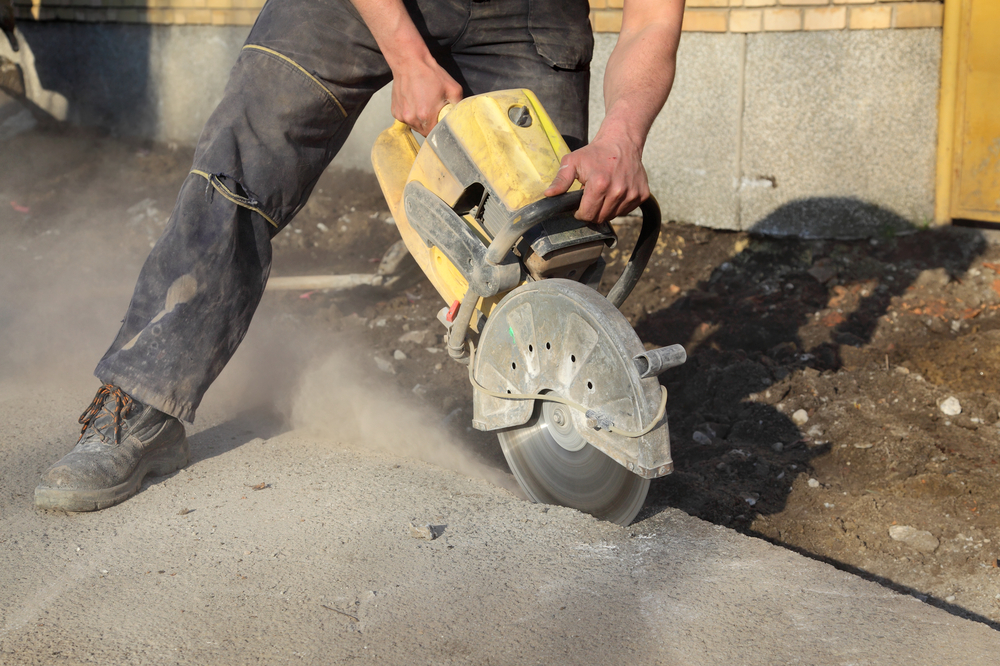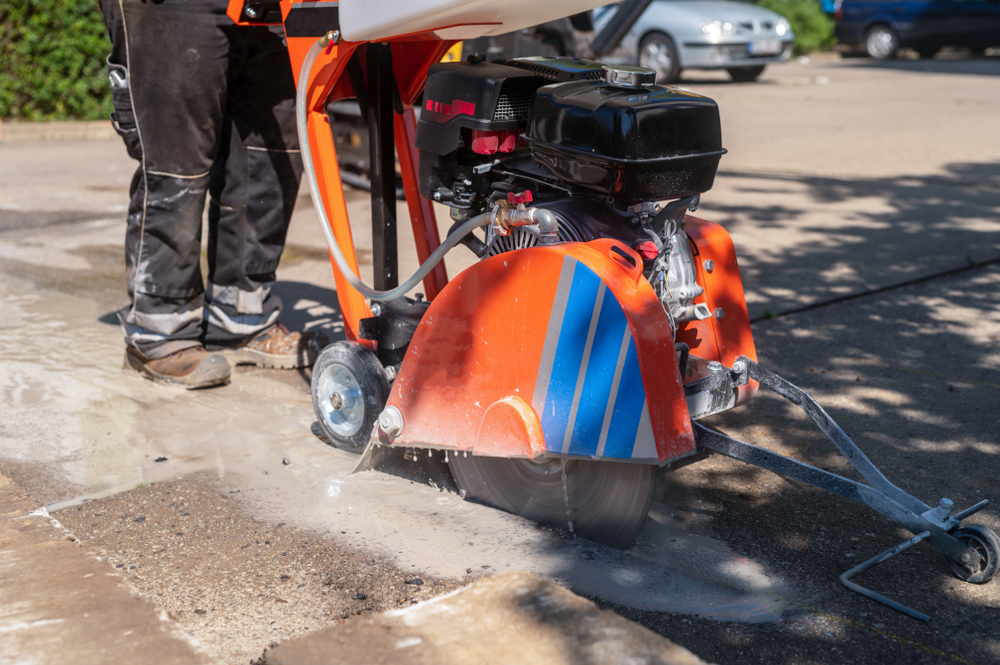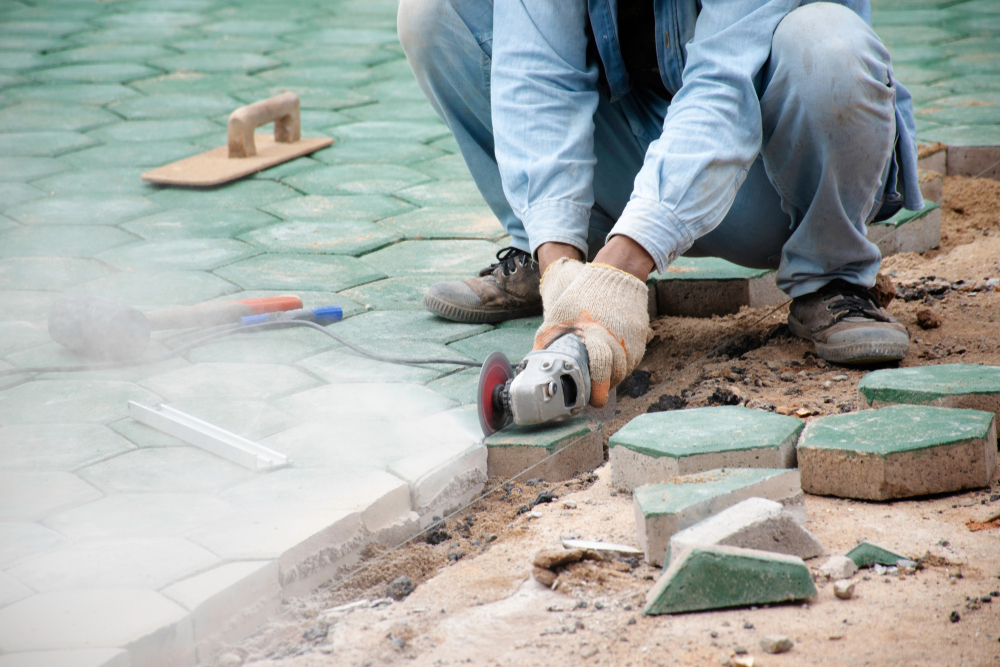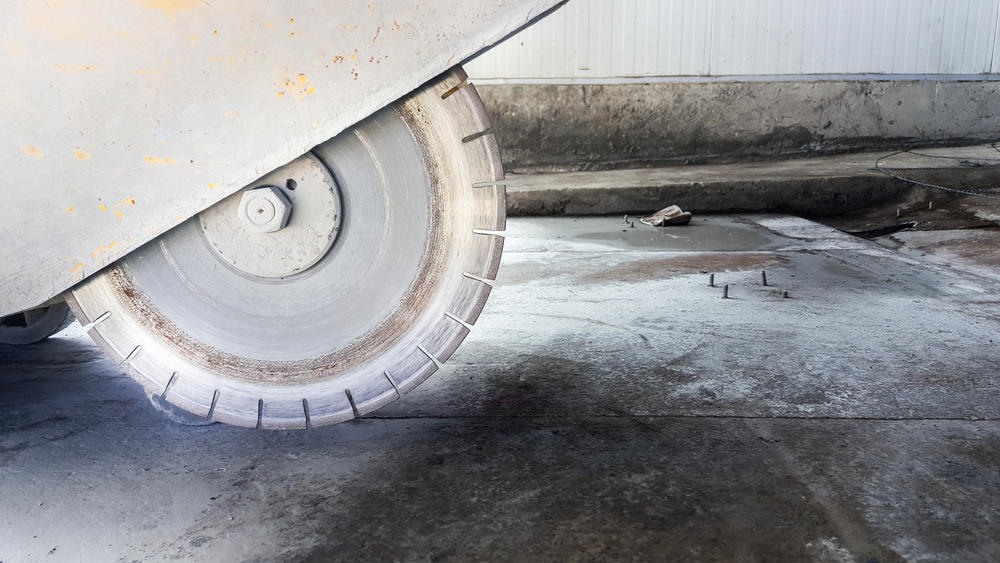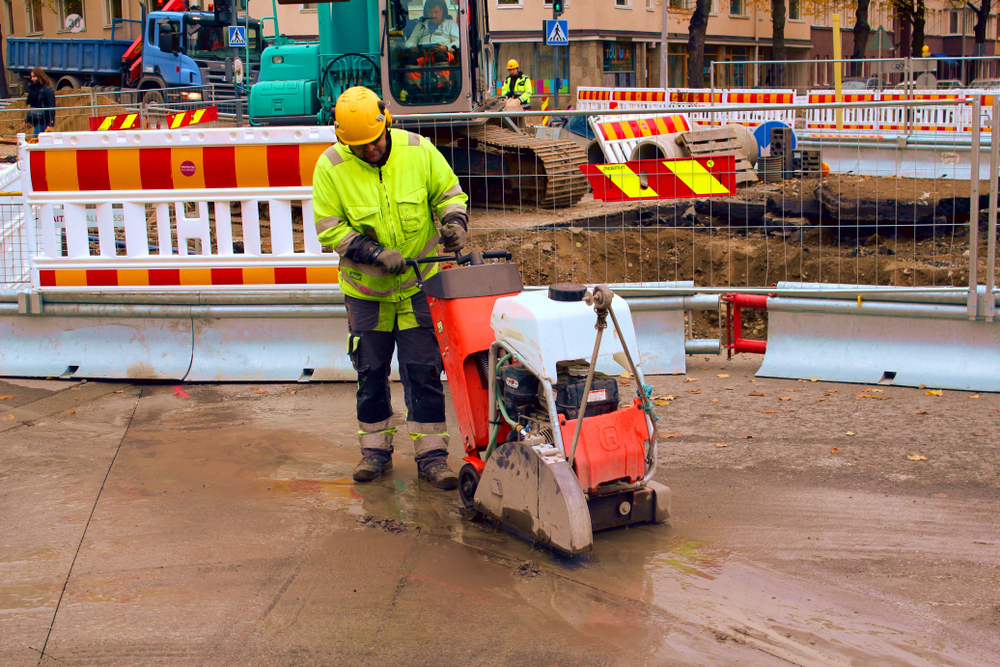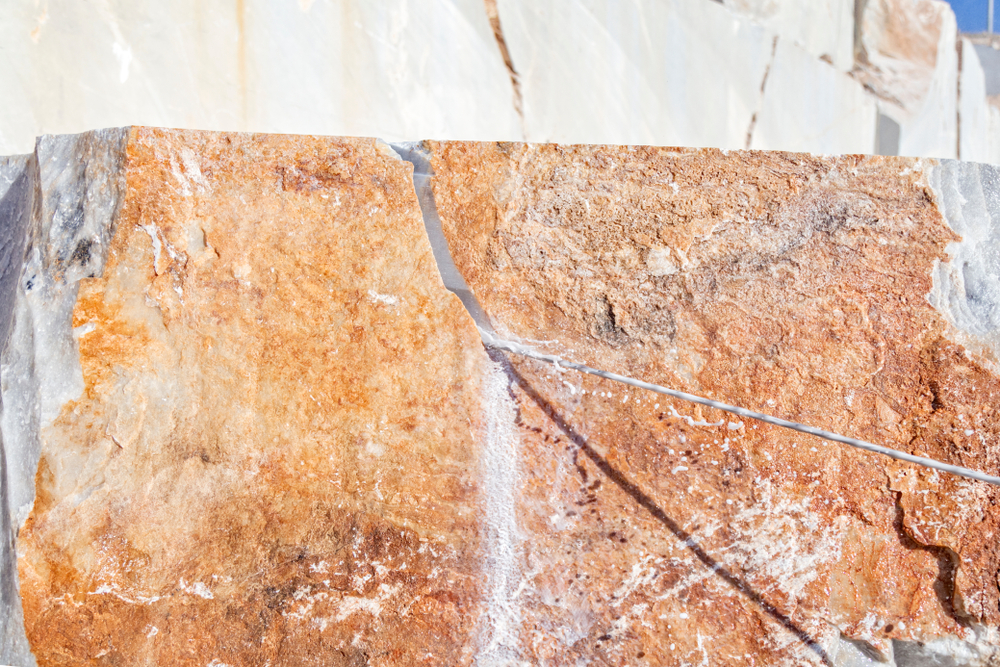Do you need to use a concrete saw to cut a block of concrete? Are you curious as to how a concrete saw actually works? If so, please keep reading below.
Concrete saws have become some of the most essential construction tools in the industry today. They are quite efficient in cutting big and small concrete blocks.
Knowing how a concrete saw works will help you use it more productively to cut blocks or slabs of concrete.
There are many reasons to use a concrete saw when it comes to concrete sawing efficiently.
Whether you want to remove excess concrete material in your home or create a different look for a new patio, you need to use a concrete saw for the job.
Therefore, in this article, we will take a look at the following:
- How Does A Concrete Saw Work?
- Use The Best Concrete Saw For The Concrete Job
- Select The Right Blade For The Project
- Use Protective Gear At All Times
How Does A Concrete Saw Work?
A concrete saw is a power tool used for cutting hard construction materials such as concrete, masonry bricks, tile, and asphalt slabs.
The concrete saw uses diamond blades to cut through hard materials with ease. The saw can be powered by gasoline, pneumatic or hydraulic pressure or an electric motor.
Diamond blades are the best blades to use but they should be cooled when cutting hard materials like concrete because of the significant friction generated during the process.
This is important to prolong the life of the blade and reduce concrete dust when cutting the material. Wet and dry cutting are two popular methods of using a concrete saw to cut concrete blocks.
Wet cutting reduces the amount of concrete dust generated during the cutting process and helps prolong the lifespan of the diamond blade.
Use The Best Concrete Saw For The Concrete Job
There are a number of different types of concrete saws on the market today. You need to choose the best saw for the job at hand.
For example, a walk-behind saw is ideal for a large cutting project on the floor.
Walk-behind saws are the heaviest saws on the market today. They make the deepest cuts – which eliminate the requirement for several shallow cuts.
Walk-behind concrete saws use the wet cutting method to reduce the amount of dust during the cutting process. Water helps keep the blades cool and dust down during the process.
Select The Right Blade For The Project
Next, you need to make sure you choose the right blade for the concrete saw. Diamond blades are the most popular today due to their efficiency and long life.
The exposed diamond crystals of the blade do the cutting. When the exposed diamonds become dull, they will automatically fall away and new ones are exposed.
You can use a wet cutting blade with water and a dry cutting diamond blade without water.
Use Protective Gear At All Times
Cutting concrete is a highly specialised job that comes with a range of risks. It’s vital to use the right protective gear when cutting concrete.
You should be aware of the hazards posed when cutting concrete and use the right protective gear to protect yourself during the process.
For example, eye goggles should be used to help protect your eyes while cutting concrete.
As concrete cutting can be quite noisy, you also need to wear protective equipment for your ears during the cutting process.
Heavy-duty gloves and industrial boots should be used to help protect your hands and feet. Hard hats or helmets should be used to help protect your head during the process.
These are all important things to consider when cutting concrete using a concrete saw.
If you are looking for a specialist concrete cutting company who uses only the best practices to get the job done right, then please call us at Megasaw on 1300 920 419 or contact us through our website.

